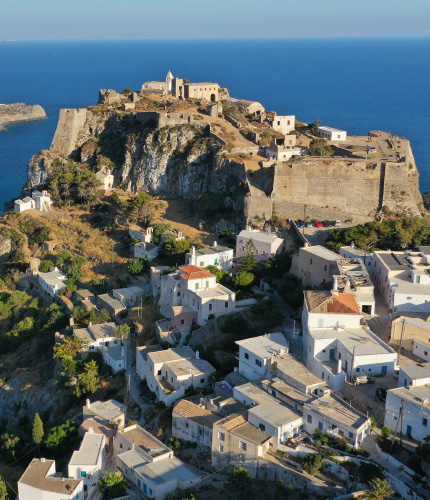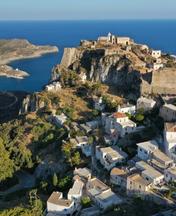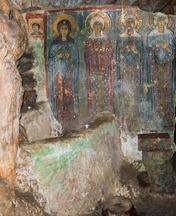Greek mythology says that Kythera was the birthplace of the goddess Aphrodite, which is why there was a sanctuary in her honor on the island. The history of Kythera began in the Minoan times, with the Minoans using Kythera as an intermediate stop for their journeys to the West. In ancient times, Kythera was mainly under the control of Sparta, but was often occupied by the Athenians, as they were located in an extremely strategic spot in the Mediterranean Sea. During the Byzantine period, Kythera was the seat of a Bishop. In the 7th century AD, the Byzantine emperor Constantine donated the island to the Pope, who in turn gave it to the Patriarchate of Constantinople. In 1204 the Franks occupied Constantinople, as well as many islands. Markos Venieris conquered Kythera in 1207 and became a Marquis of Kythera. During the Venetian occupation the island was renamed Tsirigo and is divided into three provinces: Milopotamos, Agios Dimitrios (now Paleochora) and Kapsali. The Venetians observed the strategic position of the island and as a result settled there and began to build many fortifications around it. One of them is the strong castle above Chora that survives to this day. On May 21, 1800, the Treaty of Constantinople established the semi-independent Ionian State (which also included Kythera) under the supervision of the Sultan. The inhabitants of Kythera participated in the Greek Revolution against the Turkish occupation. On May 21, 1864, the Ionian Islands were united with the rest of Greece. The wave of migration intensified in the early 20th century when people were leaving en masse for America and Australia. During the First World War, Kythera participated in the political movement created by Venizelos, formed an autonomous administration and strengthened the Allied Forces. The occupation of World War II by the Italians and the Germans increased immigration, which became even more intense after the war.














